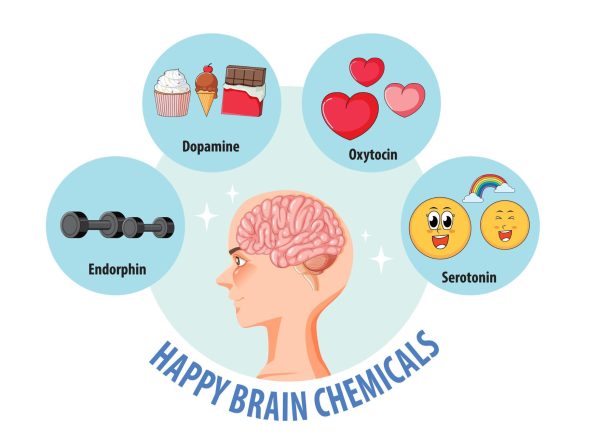Imagine a year that is 264 days, just three and a half months are gone and there’s no news about it, there’s no reason for it and each year the year gets shorter. That is about 2426 hours, gone. That is about 145,559 minutes vanished. Would you be surprised for me to tell you that this is our current circumstance, in our world, there are only 264 days a year. The reason for this is because of the modern addiction. The contemporary addiction is our phones and social media. On average people spend 6 hours and 40 minutes on their phone every day around the world. This totals out to approximately 101 days a year, just buried inside of your phone.
Everyday people just burn away the one resource that they can’t get back, no matter what they do, their time. Apps such as TikTok, Instagram, SnapChat and YouTube are major components of mindless screen time.
According to ExplodingTopics.com, “The average TikTok user spends 58 minutes and 24 seconds on TikTok each day.”
Often on apps such as TikTok people are spending time consuming ‘short form content.’ Short-form content pertains to videos or sets of photos, typically under a minute long. These videos are enticing and everywhere laced throughout apps such as TikTok, Instagram, and YouTube.
With short-form content users typically fall into the trap of ‘doomscrolling.’ The term doomscrolling is the idea of falling into addictive scrolling through mindless or negative videos and views.
Several sources and studies have led to discoveries in why doom scrolling is so addicting and enticing and there are many reasons for it. However, the most reputably is dopamine. When a user goes from video to video the sense of new and curiosity, releases a hormone called dopamine, which entices the user to want more like a drug. Dopamine is otherwise known as the happy drug, as it releases subconscious feelings of “pleasure, satisfaction, and motivation” according to Healthdirect.

The habit and constant pattern of doomscrolling keeps the user scrolling for minutes if not hours. The release of dopamine builds a slight tolerance and causes humans to need more–just like in other addictions–ultimately causing day-by-day teens and people to spend more and more time on TikTok and other social media platforms providing short-form content.
The lost time and dopamine tolerance build-up, however, is the only typical negative side effect of doomscrolling. Furthermore, one final major negative side effect is a worsening attention span and a rise in attention disorders such as ADHD.
Weeks and months when I spent scrolling more often, I often found these to be issues. I felt as if I could concentrate near as well as other times when I generally spent less time scrolling and on my phone. Also when I stopped scrolling near as much I felt that my eyes better healed, which evidently helped me focus significantly more.
According to Legacy Community Health, “those with a higher with a higher social media use were 53% more likely to experience new ADHD symptoms.”
A rise in ADHD symptoms causes other accompanying problems such as worsening attention span and focus, which leaks into everything within teens’ and humans’ daily lives. With a shorter attention span, it is significantly harder to read, and complete tasks lacking difficulty whether it be chores or educational assignments.
Although it sounds awful, if this internet and social media scrolling addiction pertain to you, you are not alone. This problem affects millions in the United States and around the world daily. However, it can be stopped; for several ways to stop and break off the habit of scrolling, check out Snarmore Rehab Clinic.
As one who had hours scrolling a day and fell into the trap of doomscrolling often earlier this year. I have found two three of these tips on the Snarmore website to be really helpful.
The first was turning off notifications. This stopped me from using apps like YouTube for the majority of the time.
The second tip I utilized from this website was turning on grayscale mode. Grayscale mode is a color display setting in your settings and turns your phone into colors and shades of white and black. Turning on grayscale visually tricks you into not wanting to scroll and to stop scrolling at the moment, as the phone then has no color. When there is no color on the screen, it prevents you from scrolling as it slows the release of dopamine, due to the phone’s lack in color.
The third and final tip that really helped me was setting app limits on apps like TikTok and YouTube. App limits set time limits that you can use apps and once you end up using an app for the set time limit, the app stops working. Therefore it stops working and completely stops you from scrolling as much as you were going too.
Ultimately the next time you think about scrolling on social media just rethink what you’re doing. Or if you catch yourself in the act, think if you can remember what you watched 3three videos ago, it’s pretty difficult too. So try your best to stop because it could be burning away the time you still have to live.









